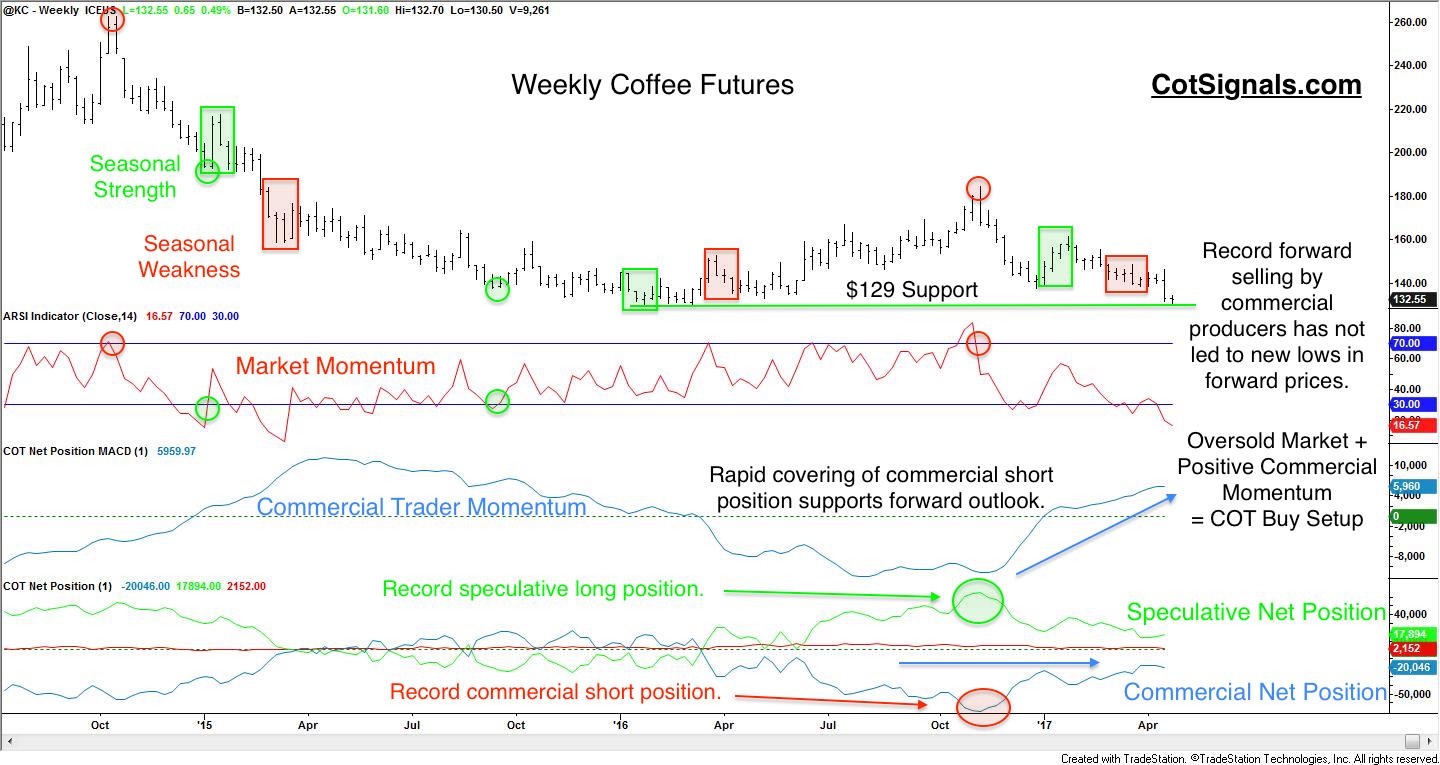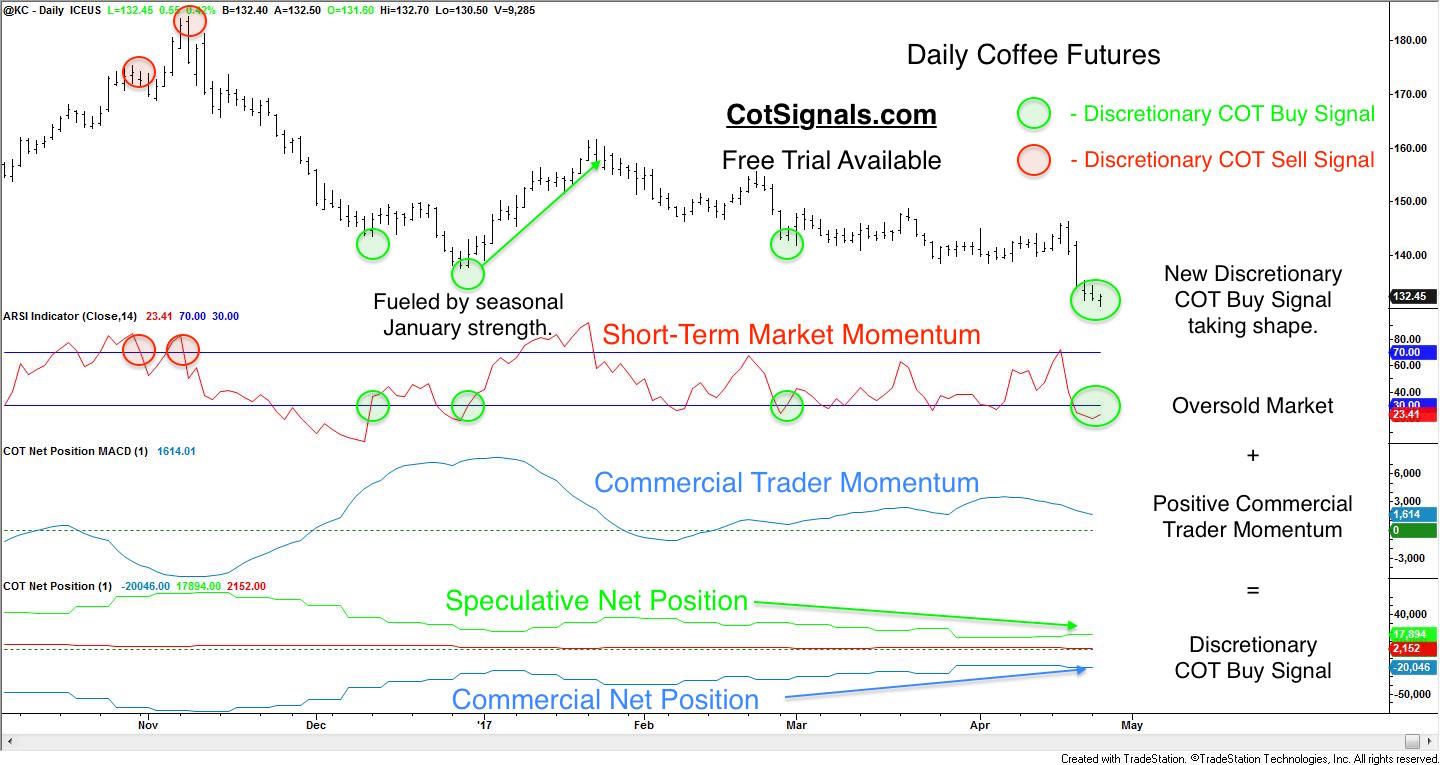The coffee futures market has survived the most recent bout of seasonal weakness only to find itself left to rest on long-term technical support. However, the consistent selling by speculators throughout the early part of this year suggests that near-term strength could be volatile because coffee roasters are providing support on the buy side as they lock in their necessary business inputs. Since coffee roaster purchases are a better indicator of forward prices than speculative selling, we believe near-term strength could be volatile if roaster purchases force the speculators into short-covering mode.
We track the actions of the speculators and the commercial traders, the growers and roasters in the case of coffee, through the weekly Commitments of Traders report. You'll note the net speculator position is in green while the net commercial position is in blue on the charts below. Specifically, I want to address the record net positions set by both trading groups at the November 2016 high. It is often heard that "Speculators in the commodity markets lose money 90% of the time." It has been described in a million forms of fear and greed, but if we look at the data, it is pretty easy to see. Speculators, as a group, are trend followers. Their behavior is very similar to chasing a hot manager or fund. First, the speculators began buying last July when the market rallied above $150 and its eight-month highs as new money began to pour into the July '16 futures contract. The market held above here, only declining to $146 and change before pushing to new highs on the back of record speculative purchases between October and November of last year.
Both the speculative and the commercial traders reached record opposing positions on singles day, 11/11 of last year, which brings us to the battle's climax. Commercial coffee growers set back to back global harvest records. We knew this meant they would have more selling capacity than in the past. As predicted, the coffee growers continued to sell their anticipated forward production. Thus, capping the rally that had seen speculators buy five contracts for every contract they sold. November and December's decline show the unwinding of these record positions as the speculators were forced to take their losses and beat a hasty retreat.
This brings us to the current situation and the recent actions of the coffee roasters. The coffee producers' forward selling provides overhead resistance in the futures market while the roasters' purchases provide support. The activity so far this year has been tilted towards coffee roasters jumping back in the market on the buy side because the speculatively driven rally failed. This is forcing the market back towards long-term support at $129. We're not sure if the support at $129 will hold. However, we are confident that coffee roasters see this area as a good buying opportunity.

Moving to the daily chart shows how these trades are generated on a nightly basis. Our discretionary program is the nightly worksheet that I've been keeping for years. We take the record positions seen in the weekly data and distil this conflict down to the daily level. Weekly charts are great for big picture analysis, but the important technical levels and chart points are typically too far away to useful to the retail trader. However, by combining the underlying market's short-term momentum with the opposing momentum of the commercial traders, we can synthesize periods of conflict that create a ripe reversal setup. The reversals cue the Discretionary COT buy and sell signals as well as providing the swing high or, low for the move. Finally, because the reversal was identified on a daily rather than weekly scale, we typically afford to use this technically important and philosophically important chart point for our protective stop.

To see more of these trades, please visit COT Signals.com. Don't forget to sign up for a free trial if you'd like to receive this developing coffee signal once it triggers.




